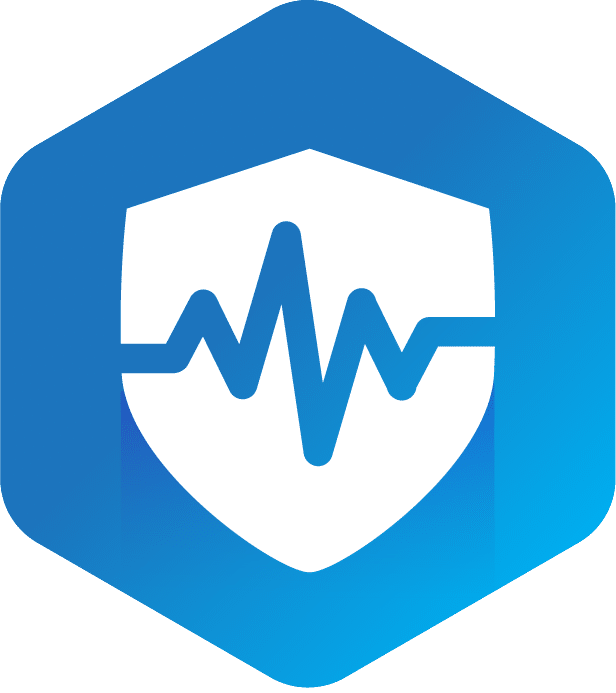Boosting mobile data security with HIPAA measures is essential for safeguarding sensitive information and achieving compliance. Start by implementing robust authentication methods, including multi-factor and biometric options, to verify user identity. Make sure to use strong, regularly updated passwords and enable automatic device locks. Keep software updated to address vulnerabilities and employ data encryption to convert sensitive data into a secure format. Incorporating these methods not only adheres to HIPAA guidelines but also greatly reduces the risk of breaches and unauthorized access. For a thorough approach to enhancing mobile security, explore further advanced strategies.
Authentication is a critical component in safeguarding mobile devices, as it verifies user identity and guarantees only authorized access to sensitive data.
Biometric authentication, such as fingerprint or facial recognition, offers a robust method for user identity verification by leveraging unique physiological traits.
Complementing this, multi-factor authentication (MFA) enhances security by requiring multiple forms of verification, thereby mitigating the risk of unauthorized access.
Passcode protection remains a fundamental layer of security, necessitating the use of complex and regularly updated passcodes to prevent breaches.
Implementing these authentication methods ensures compliance with HIPAA regulations and fortifies the defenses of mobile devices against potential threats, thereby maintaining the integrity and confidentiality of sensitive health information.
To further bolster the security of mobile devices and uphold HIPAA compliance, it is essential to implement strong, complex passwords that greatly reduce the likelihood of unauthorized access. Creating passcodes that combine upper and lower case letters, numbers, and special characters enhances security.
Additionally, PIN security should not be overlooked; a combination of random digits, rather than easily guessable sequences, is vital. Policies should mandate regular updates and prohibit the reuse of previous passwords.
Devices must be configured to lock automatically after a period of inactivity, requiring re-authentication. Such measures not only align with HIPAA technical safeguards but also mitigate risks associated with unauthorized data access, thereby protecting sensitive health information effectively.
Implementing two-factor authentication (2FA) greatly enhances mobile device security by requiring an additional verification step beyond just a password, thereby reducing the risk of unauthorized access.
Utilizing multi-device authentication guarantees that access is consistently secure across all platforms.
Effective mobile passcode management alongside 2FA fortifies secure login procedures, making it notably harder for potential intruders to breach systems.
Incorporating biometric authentication strategies, such as fingerprint or facial recognition, adds a robust layer of security by leveraging unique physiological traits.
This dual approach aligns with compliance-driven practices, mitigating risks associated with unauthorized access to sensitive information.
Consequently, 2FA is integral in adhering to stringent HIPAA guidelines for mobile data protection and contributes significantly to maintaining data integrity and confidentiality.
Consistently updating software on mobile devices is a critical practice to guarantee the security and integrity of electronic protected health information (ePHI) by addressing vulnerabilities and maintaining compliance with HIPAA technical safeguards.
Implementing robust software patching strategies and ensuring timely mobile app updates are essential components of cybersecurity best practices. Regular updates mitigate risks by fixing security flaws that could be exploited by malicious actors.
For healthcare providers, staying current with software patches not only fortifies data security but also upholds HIPAA compliance. This proactive approach demonstrates a commitment to maintaining the highest standards of data protection, safeguarding sensitive health information from unauthorized access and potential breaches.
Hence, regular software updates are essential in a thorough mobile data security strategy.
Data encryption serves as a cornerstone of mobile data security by converting sensitive information into a secret code that can only be deciphered with the appropriate decryption key. This practice is essential for data protection, offering robust safeguards against unauthorized access. Encryption guarantees that even if data is intercepted, it remains unreadable without the correct key, thereby upholding stringent privacy measures.
In compliance with HIPAA guidelines, encrypted data on mobile devices greatly reduces the risk of breaches and unauthorized disclosures of protected health information (PHI). Implementing encryption apps and utilizing built-in device encryption capabilities are crucial steps in a robust data protection strategy, ensuring that sensitive information remains secure and compliant with regulatory requirements.
Alongside encryption, firewalls play a pivotal role in safeguarding mobile data by controlling incoming and outgoing network traffic based on predetermined security rules. Proper firewall configuration is vital for ensuring robust network protection, particularly in healthcare settings where compliance with HIPAA regulations is non-negotiable.
Effective firewalls can block unauthorized access, prevent data breaches, and mitigate potential cybersecurity threats. By meticulously configuring firewalls, organizations can create a secure barrier that filters traffic, ensuring only legitimate data transfers occur. This control mechanism is integral to maintaining the integrity and confidentiality of sensitive information, such as Protected Health Information (PHI).
Essentially, firewalls not only enhance network protection but are also a key component of HIPAA’s requisite technical safeguards.
Given the escalating risk of mobile device theft and loss, remote data protection measures are essential for safeguarding sensitive information in compliance with HIPAA regulations. Implementing data wiping features and remote disabling capabilities can greatly reduce the risk of unauthorized access to sensitive health information. These measures guarantee that if a device is lost or stolen, it can be promptly secured to prevent data breaches.
Key aspects of remote data protection include:
These proactive measures enhance data security and uphold compliance with stringent HIPAA guidelines.
Implementing robust security measures is vital for ensuring thorough protection and compliance with HIPAA standards.
Enhancing overall security involves detailed data breach prevention and stringent security protocols.
Mobile device encryption is paramount, turning sensitive data into unreadable code, accessible only with a decryption key, thereby ensuring robust data protection.
Regular software updates are essential to patch vulnerabilities and maintain effective security measures.
Firewalls play an integral role by blocking unauthorized connections, safeguarding electronic protected health information (ePHI).
Additionally, the use of strong authentication methods, such as two-factor authentication, fortifies access control.
These combined measures create a multi-layered defense system, essential for mitigating risks and maintaining HIPAA compliance in mobile healthcare environments.
To sum up, fortifying mobile data security with HIPAA measures is akin to constructing an impregnable fortress, where each layer of protection—strong authentication, regular software updates, robust encryption, vigilant firewalls, and remote data safeguards—serves as a critical bulwark against potential breaches.
Adhering to these technical safeguards guarantees the integrity and confidentiality of electronic protected health information (ePHI), thereby mitigating risks and maintaining compliance with stringent regulatory standards.

